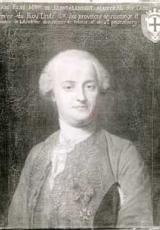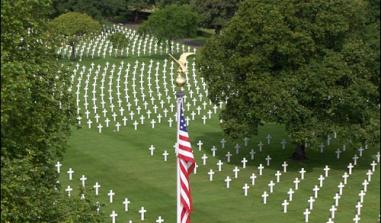Les forts de la rade de Cherbourg
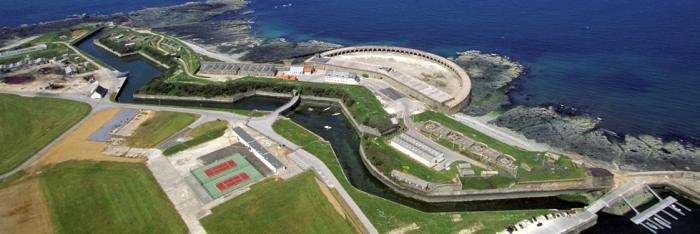
Le fort de Querqueville. Photo ECPAD
The defensive system of the port of Cherbourg is based on several fortified edifices of exceptional historical interest.
At the centre of the one thousand five hundred hectares of the largest artificial roadstead in France, the defensive system of the Port of Cherbourg is arranged around several fortified edifices, warships forever petrified present exceptional historical point of interest. The inspection of the Cherbourg bay defences by Louis XIV in 1786 marked the beginning of the reinforcement of the coastal defences. During the course of the XIXth century, the forts constructed were adapted to changing artillery methods, which were becoming ever more powerful. During the second world war, a part of the fort was operational and served to cordon off a strategic point of passage and for bringing allied provisions into Great Britain . When Cherbourg fell to the enemy on the 30th June 1944, the port installations sustained considerable damage, as evidenced by numerous bullet and shell holes indelibly marking the granite stones.
In 1787, the foundations of the Querqueville fort were laid on the site of the a modest semi-circular fort dating from the Seven years war. The construction of the fort was interrupted before its completion, when the passage for vessels was moved one kilometre to the west.
The Querqueville fort, from which troops had to shoot from long distances and was therefore inaccurate, saw its vocation considerably reduced. The work undertaken was nevertheless completed in 1795, resulting in a construction in the shape of a semicircular casemate, opening up into a central courtyard, and protected by a two-tiered barracks. On the land side, the semi-circular gun battery with fifty three casemates was protected by a bastion separate from the rest of the edifice. In the mid XIXth century, an artillery firing range was added to the area surrounding the fort. This served as a firing range for the Marine gunners, before being used as the site for a barracks for accommodating colonial troops in 1895. Large-bore coastal batteries were added to both ends of the fort around 1879. An aeronaval base was constructed in 1925 near the fort, used during the 1940 campaign by allied aircraft who attempted in vain to drive back the advancing enemy troops in the Cotentin. The fort was later used as a training ground for the School of National Marine Safety. The terrace of the fort, the cavities on the first floor, the bastioned façade with its protrusions, its recesses and its moats, all suffered damage during the bombardments of the second world war. However, the Querqueville fort is without doubt the best preserved fort in the Cherbourg roadstead, and is regularly opened to visitors during heritage days.
Around 1784, the Count of Chavagnac undertook soundings of the deep waters of the Cherbourg roadstead in order to study the future implantation of the grand harbour wall, and discovered several rocky islets. Later on during the mid XIXth century, military engineers used one of these rocky ridges to anchor a defensive fort near to the western pass of the roadstead. Built in 1854, the Chavagnac fort is a triangular edifice with rounded edges, designed to cross fire with the western battery on the end of the harbour wall. Swivelling armoured dugouts were added to the fort, and it was also strengthened by a stone parapet and a breakwater wall. Like all the main forts which make up the roadstead, it was concreted at the end of the XIXth century and electricity was installed. The fort is now in ruins, and can only be admired from the sea.
The stones used to build a first battery at the end of the XVIIIth century crumbled during a violent storm in 1808. Almost entirely rebuilt from 1811, the central fort is arranged around a lighthouse surrounded by barracks and logistic buildings. Built in an elliptical shape, it has a flat roof overlooking two rows of casemates, concealing a vast interior courtyard. Originally, the upper firing level, an open-air battery, made gunwale fire possible (above the parapet due to the elevated platform). However, the height of the structure was reduced at the end of the XIXth century, to keep pace with progress in artillery technology. The lighthouse was destroyed, the central courtyard was covered in concrete, and two exterior barracks were added. Under German occupation, the enemy troops modified the fort, installing a powerful garrison to provide guns for defending the western and eastern passes. Since the last period during which it came under fire, the central fort has retained a fortified dugout with armoured doors, an elevator to bring the munitions to the dugout, and a 37 mm cannon in its casing. Now seriously damaged and unstable, the fort is no longer accessible to the public.
Built in the mid XIXth century, the forts, known as the western and eastern forts rose above the waves at either end of the harbour walls surrounding the Cherbourg roadstead. They originally took the form of triple-tiered forts, of which two were casemates. These two forts were built around a circular courtyard, and they had two casemate levels with an open-air battery on top of them, with a parapet made from clay, covered with brick. The two ground levels were given over to the garrison's quarters, and also housed the armouries. They were concreted at the end of the XIXth century and they served as coastal defences during the 1940 campaign. Threatened by the rapidly advancing enemy, the French army blew up the marine battery inside the eastern fort on the 18th June 1940, which then led to the destruction of the whole fort, of which only a few blocks of concrete now remain.
Built in 1779 on a rocky mass on the site of a smaller fort, the fort of the island of Pelée was designed to strengthen the defences of the eastern pass of the Cherbourg roadstead. The engineer Pierre-Jean de Caux, director of the Lower Normandy fortifications, supervised the construction work, and created a work concentrating numerous pieces of ordnance within a restricted area, taking inspiration from the military architecture of the marquis of Montalembert. The fort, in the shape of an irregular semicircle with rounded walls to dissuade enemy fire, the fort is built around a central courtyard, and originally had two floors. On the ground floor are buildings designed to house supplies and munitions, protected by a monumental gate accessed by a ramp. On the upper level, casemate batteries are positioned ready to open fire on attackers. The whole edifice is topped with a flat roof positioned behind a parapet. Progress made in artillery technology towards the end of the XIXth century led to the redevelopment of the fort. It was concreted and its now useless parapets were removed. A smaller port protected by two stone groynes and an inclined plane in granite was added to the front of the edifice. Used for many years as a prison for political prisoners, the fort of the Island of Pelée was modernised by occupying German troops, who installed an electric power station inside its walls. Originally linked to dry land by a rocky outcrop, the island of Pelée and its fort are not open to visitors, only the ramparts of the fort are visible from the sea.
Cité de la mer and Le Redoutable The former transatlantic harbour station of Cherbourg is the jewel in the crown of 1930's architecture. Built in reinforced concrete in 1928 by the architect René Levavasseur, in collaboration with the engineers Chalos and Fleury, it retains its unique Art Deco style interior decoration designed by the Marc Simon workshop. Inaugurated in 1933 by the French President Albert Lebrun, the harbour station was partly destroyed by the Germans in 1944. It is now home to the Cité de la mer, a vast space dedicated to the discovery of human underwater exploits. Offering permanent exhibition galleries dedicated to ocean exploration, the Cité de la mer is now also home to the very first French nuclear submarine, Le Redoutable. Launched in 1967 from Cherbourg arsenal, the SNLE (nuclear submarine missile launcher) returned there in 1990 to be dismantled, and the section containing the nuclear steam supply system removed. Now on display on one side of the permanent exhibition gallery building, visitors can walk around it from the stern to the bow, guided by a recorded commentary through headphones (in French or English) and listen to sound effects of the submariners' daily lives. Visitors with reduced mobility can also visit the former war machine, where an interactive terminal enables them to go on a guided tour of the submersible.
Cherbourg and Haut-Cotentin Tourist Office 2, Quai Alexandre III 50100 Cherbourg-Octeville tel. 02.33.93.52.02 fax. 02.33.53.66.97 e-mail : tourisme@ot-cherbourg-cotentin.fr Cité de la mer Transatlantic harbour station 50100 Cherbourg-Octeville tel. 02.33.20.26.26 fax. 02.33.20.26.27
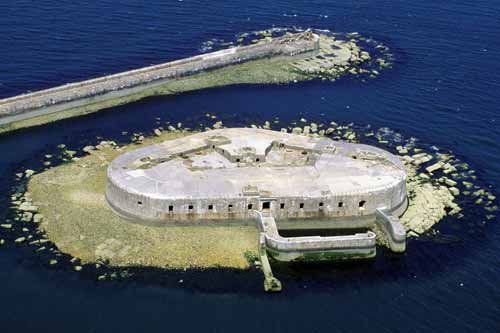
The Chavagnac fort. Photo ECPAD
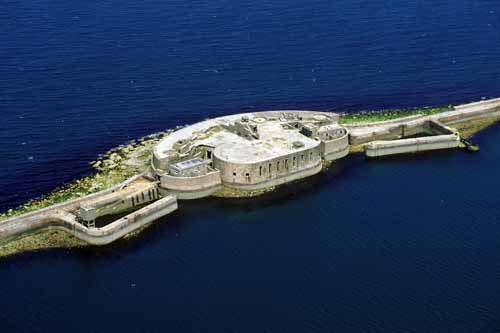
The central fort. Photo ECPAD
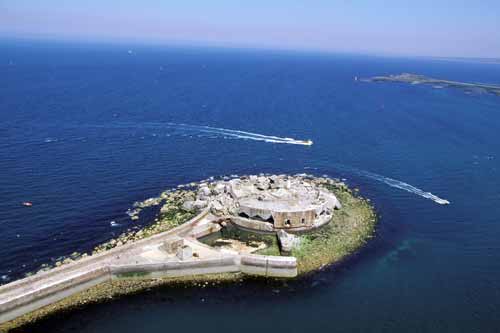
The eastern fort. Photo ECPAD
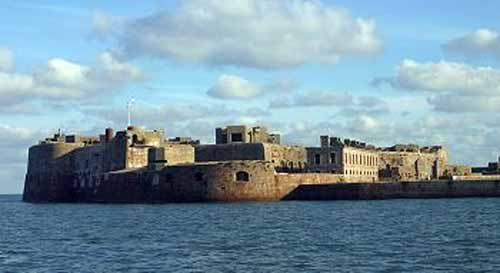
The fort of the island of Pelée. Photo G. Rueda - www.netmarine.net
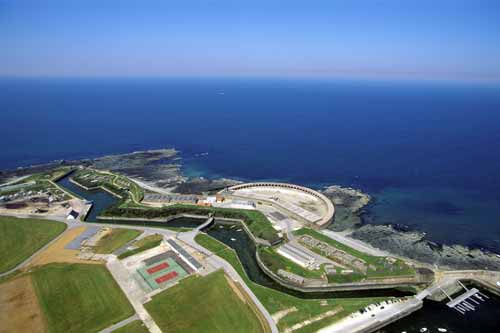
The Querqueville fort. Photo ECPAD
Practical information
50000
cherbourg
02 33 93 52 02
Décembre: 14h à 17h


